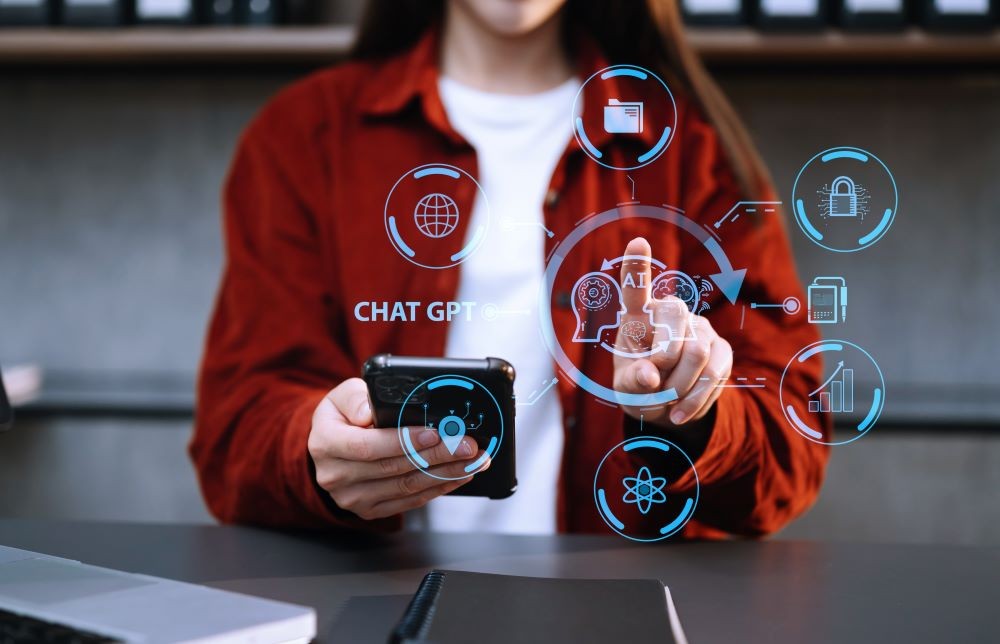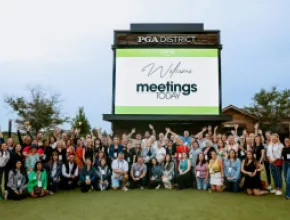While it may seem new to many meeting professionals thanks to the splash made by ChatGPT, Artificial Intelligence (AI) has been integrated into many of the technology platforms we use for years.
From chatbots and virtual assistants to geolocation and language translation, meeting professionals have been using AI to lower costs, create efficiencies and design more fluid customer experiences long before the advent of today’s popular large language model engines.
[Related: MPI Academy Launches New AI Certificate Course]
To better understand how professionals are utilizing the newest AI technologies and integrating them into workflows, MPI incorporated a series of questions into its Q4 2023 Meetings Outlook research.
The results? Only a quarter (22%) of meeting professionals use generative AI often. In fact, 48% say they’ve never used it. Another 34% say they aren’t aware AI is already embedded in many of the platforms they use regularly. Only 4% of meeting professionals say they are using these integrated features often.
While (known) usage isn’t high, sentiments are.
Half (50%) of meeting professionals say they have a positive or somewhat positive view of AI while just under one-fifth (19%) say they have somewhat negative or negative perceptions about it.
So, how are meeting professionals using AI? According to Meetings Outlook, here are the top seven ways your peers are using AI today.
[Related: How ChatGPT Will Impact the Meetings and Events Industry]
1. Content & Idea Generation
Meeting professionals find that generative AI tools can help facilitate brainstorming by providing a wealth of ideas based on given parameters or prompts. It can assist in creating content and descriptions for agendas and sessions and producing themes. It can write scripts, compose summaries and create know-before-you-gos.
By analyzing trends, user feedback and social media discussions, AI algorithms can identify and prioritize content that resonates with your audience. Meeting professionals are using image generators to conceptualize space and decor (and sharing these with partners to align on vision).
AI can also make speaker recommendations, including identifying subject matter experts near your event.
[See the Author Deliver a Session on AI at Meetings Today LIVE! South in San Antonio!]
2. Research & Data Analysis
Meeting professionals are increasingly utilizing generative AI for research and data analysis to streamline processes and uncover insights. AI can assist in collecting relevant data from various sources such as surveys and online databases. AI can also analyze unstructured data from meeting transcripts, emails and social media conversations.
These algorithms can extract key information, identify trends and uncover patterns, providing valuable insights.
Think about your thousands of open-ended survey responses. Remove identifying data and then ask AI for a summary of what people said.
AI can also gauge attendee sentiment and feedback. It can leverage predictive analytics to forecast future trends and outcomes based on historical data. By analyzing past meeting performance, attendee behavior and market trends, meeting professionals can make data-driven decisions to optimize future meetings and improve overall outcomes.
AI can even determine the best days, times and dates to purchase airfares to different cities and destinations.
[Related: 10 Tips for Using AI to Radically Improve Meetings and Events]
3. Marketing and Communication
Generative AI helps meeting professionals analyze attendee data and preferences to create targeted advertising campaigns.
By segmenting audiences based on demographics, interests and past behavior, AI can personalize marketing messages to increase engagement and conversion rates. Chatbots and virtual assistants help with customer support and engagement. These bots can answer attendee questions, provide event information and assist with registration.
AI assists meeting professionals in generating marketing content such as blog posts, articles and social media updates.
Whether it’s generating catchy headlines, writing compelling copy or creating engaging visuals, AI-powered tools streamline content creation processes and maintain a consistent brand voice. (It should be of no surprise to you that while this list was generated from the very real humans responding to our Meetings Outlook research, AI assisted with use cases and summaries.)
4. Content Revision/Proofreading
Generative AI tools can detect and correct spelling and grammar errors in meeting materials such as agendas, presentations and promotional materials. It can ensure consistency in terminology, formatting and style across different documents and materials.
By analyzing patterns and identifying inconsistencies, AI-powered proofreading tools can suggest edits to maintain coherence and clarity throughout the content. AI algorithms can also provide contextual suggestions for improving sentence structure, word choice and overall readability.
5. Automation of Basic Tasks
AI-powered tools can automate data entry tasks by extracting information from forms, emails and other sources. This reduces the need for manual data entry, minimizing errors and saving time. AI algorithms can analyze schedules, availability and preferences to schedule meetings, appointments and sessions.
As mentioned before, AI-powered chatbots and virtual assistants can engage with attendees, answer questions and provide information about the event.
And after an event, AI algorithms can analyze event data and generate reports on key metrics such as attendance, engagement and feedback.
6. Multilingual Support
Generative AI enables meeting professionals to translate meeting materials into different languages and localize content for diverse audiences. By leveraging machine translation algorithms, AI-powered tools can accurately translate text while preserving meaning and context, facilitating communication with international attendees and stakeholders.
Onsite, AI can translate speaker audio and provide transcripts of sessions.
7. Personal Assistant
AI-powered virtual assistants perform a variety of tasks, such as scheduling meetings, setting reminders, sending emails and providing information on demand.
These virtual assistants understand queries and execute tasks autonomously. They assist with meeting preparation, scheduling and follow-up tasks; generate agendas; provide background information on participants; take meeting notes; and follow up on action items.
AI-powered assistants can assist with travel planning by suggesting flight options, booking accommodations and providing recommendations for restaurants and activities. These assistants can also provide real-time updates on travel disruptions and weather conditions.
Bonus: Legal & Contractual Tasks
Note: Do not replace your legal team, and I am not your lawyer. AI can analyze and extract key information from contracts quickly and accurately. It can identify clauses, terms and obligations; flag potential risks or discrepancies; and highlight important provisions for review by legal professionals.
AI-powered tools can generate contract summaries and executive summaries. These summaries can help meeting professionals communicate contract terms and implications more effectively to stakeholders and facilitate decision-making during negotiations.
MPI AI CERTIFICATE
If you are ready to maximize your use of AI, register here for MPI’s NEWLY LAUNCHED AI Certificate program. As thanks for being an avid Meetings Today reader, take 20% off using the code R2YN2024.
Read Next: Internal Meetings, AI to Drive Meetings and Events Industry Growth in 2024







